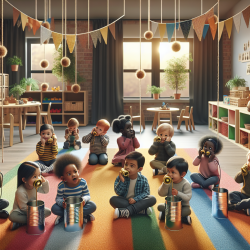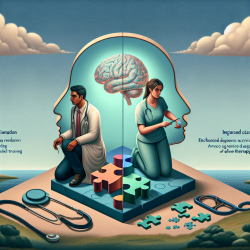Understanding how children develop a representational theory of mind (ToM) is crucial for speech-language pathologists and educators who aim to foster better cognitive and social outcomes in children. Recent research, particularly the study "Perceptual Access Reasoning (PAR) in Developing a Representational Theory of Mind" by Fabricius et al. (2021), offers valuable insights into the cognitive processes that underlie children's social understanding. This blog will explore how practitioners can leverage these findings to improve their skills and encourage further research.
What is Perceptual Access Reasoning (PAR)?
PAR is a cognitive framework that children use to understand the connection between seeing and knowing. It posits that children initially believe that perceptual access (seeing) leads directly to knowing, and lack of perceptual access leads to not knowing. This understanding evolves into a more complex representational ToM as children grow older.
Key Findings from the Research
The study by Fabricius et al. (2021) involved multiple experiments with children aged 4-7 years and a small sample of adults. The key findings include:
- Children often use PAR to pass false-belief tasks without truly understanding false beliefs.
- Most children do not fully understand true or false beliefs until middle childhood.
- PAR can explain children's performance on traditional ToM tasks and their social and cognitive development.
- The Belief Understanding Scale (BUS) can distinguish between children using PAR and those who understand beliefs.
Implications for Practitioners
Understanding that children rely on PAR can help practitioners tailor their interventions more effectively. Here are some practical steps:
1. Assessing Understanding of Beliefs
Use the Belief Understanding Scale (BUS) to differentiate between children who use PAR and those who understand beliefs. This can help in designing targeted interventions.
2. Tailoring Interventions
For children using PAR, focus on activities that help them understand the persistence of knowledge beyond immediate perception. For example, use games and storytelling that require children to infer what characters know based on past events.
3. Enhancing Social Skills
Incorporate activities that promote perspective-taking and understanding others' mental states. Role-playing and social stories can be particularly effective.
4. Encouraging Further Research
Practitioners should stay informed about ongoing research in ToM and PAR. Participating in research studies or collaborating with academic institutions can provide valuable insights and improve practice.
Conclusion
Implementing the insights from PAR research can significantly enhance the effectiveness of interventions aimed at improving children's cognitive and social outcomes. By understanding the developmental trajectory of representational ToM, practitioners can create more nuanced and effective therapy plans.
To read the original research paper, please follow this link: Perceptual Access Reasoning (PAR) in Developing a Representational Theory of Mind.










